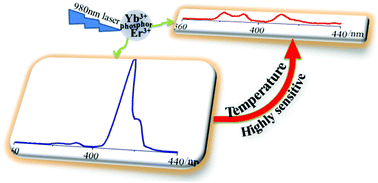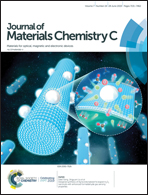Highly sensitive optical ratiometric thermal sensing based on the three-photon upconversion luminescence of Y2O3:Yb3+,Er3+ nano-thermometers
Abstract
Highly sensitive optical thermal sensing is achieved here based on the three-photon upconversion luminescence of Y2O3:Yb3+,Er3+ nano-thermometers. In the temperature range of 303–783 K, the 4G11/2 and 2H9/2 energy levels of Er3+ ion embedded in Y2O3 nanocrystals are found to be thermally linked. The 4G11/2–4I15/2 and 2H9/2–4I15/2 transitions’ intensity ratio thus satisfies the Boltzmann distribution. It is demonstrated that the relative sensitivity, on the basis of this ratio for temperature measurement, is as high as 2.05% K−1 at 303 K. It is, to the best of our knowledge, the maximum thermal sensitivity reported so far for the 4G11/2–4I15/2 and 2H9/2–4I15/2 transitions in various hosts. Moreover, this sensitivity is larger than all previously reported values that depend on the luminescence of the Er3+ ion. What's more, this value is also among the highest sensitivities achieved based on other thermally linked states of rare earth ions. As an added benefit, it has been shown that the single 2H9/2–4I15/2 transition can also be used for optical thermal sensing and its relative sensitivity is up to 1.27% K−1 at 783 K, which is 2.9 times the theoretical maximum sensitivity of ratiometric thermal detection based on the thermally linked states of rare earth ions.

- This article is part of the themed collection: Editor’s Choice: Progress in singlet fission and photon upconversion


 Please wait while we load your content...
Please wait while we load your content...